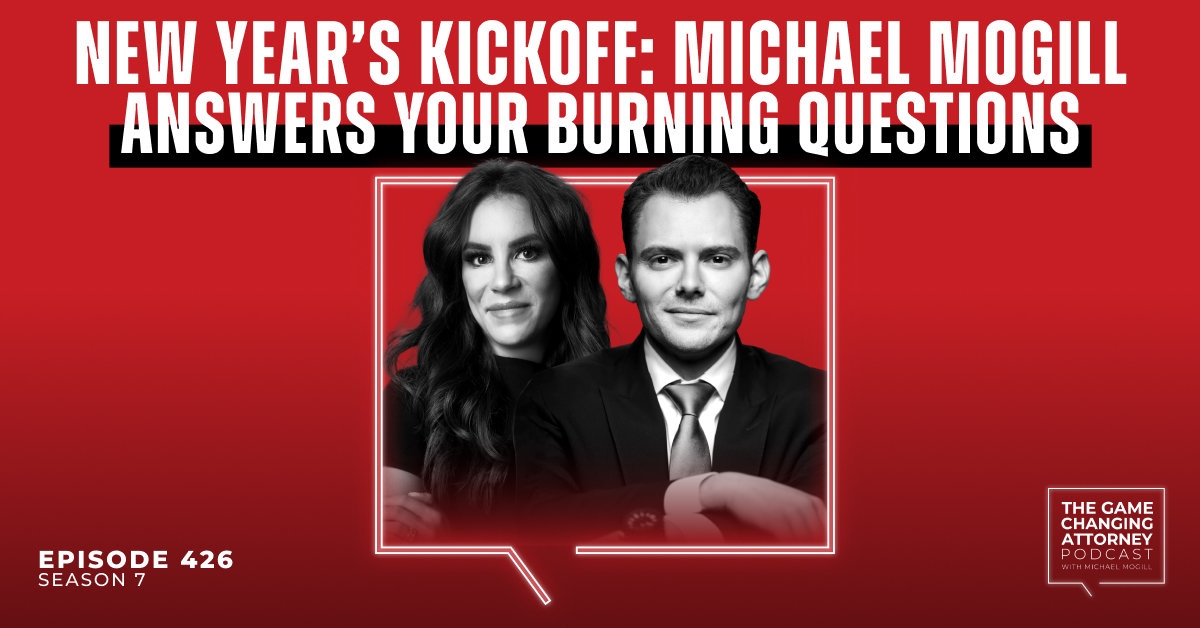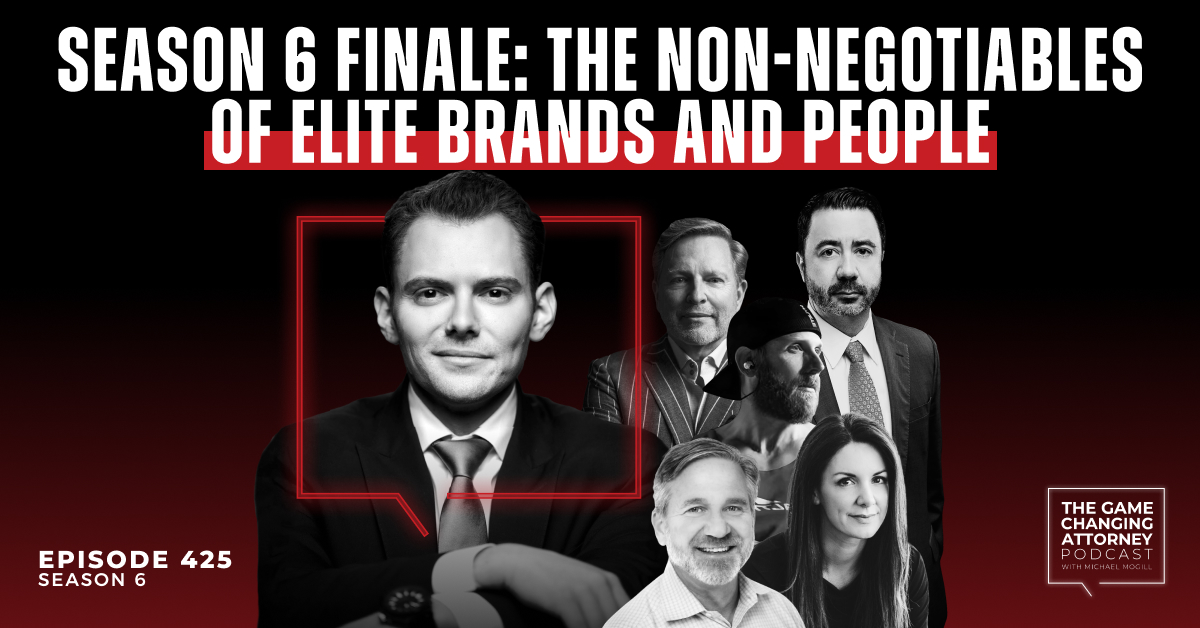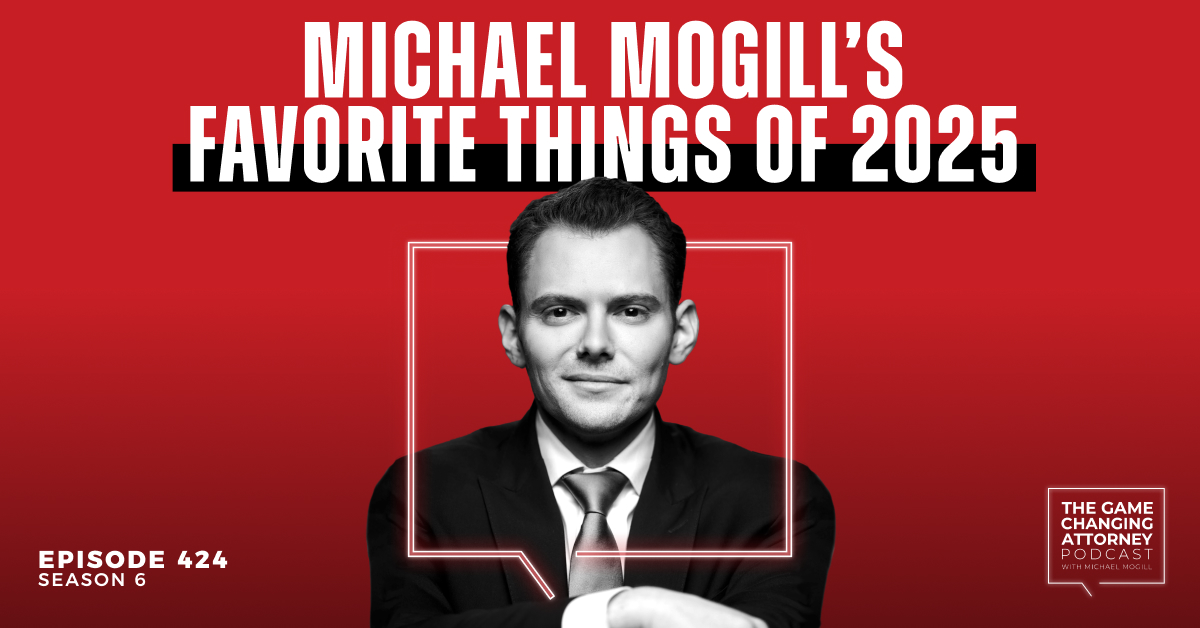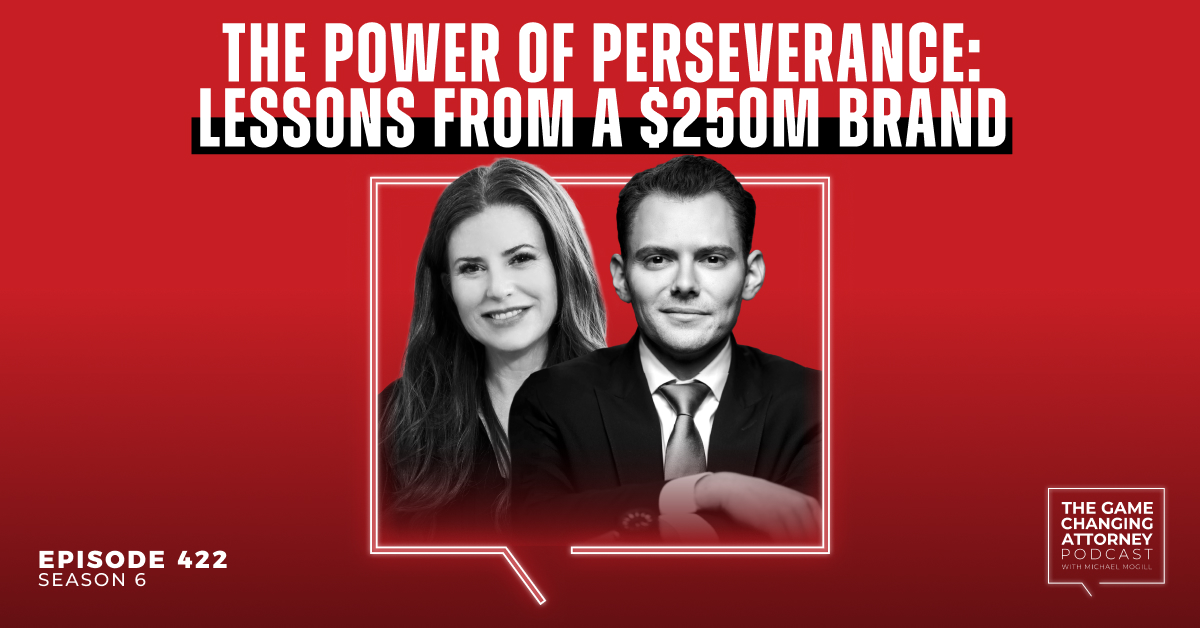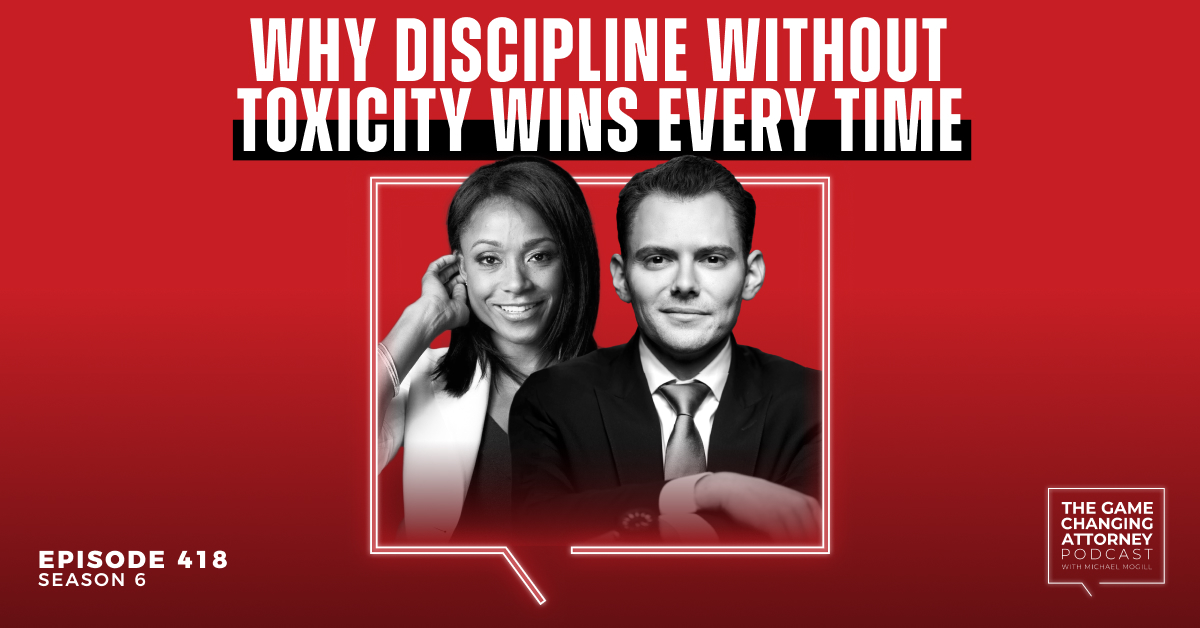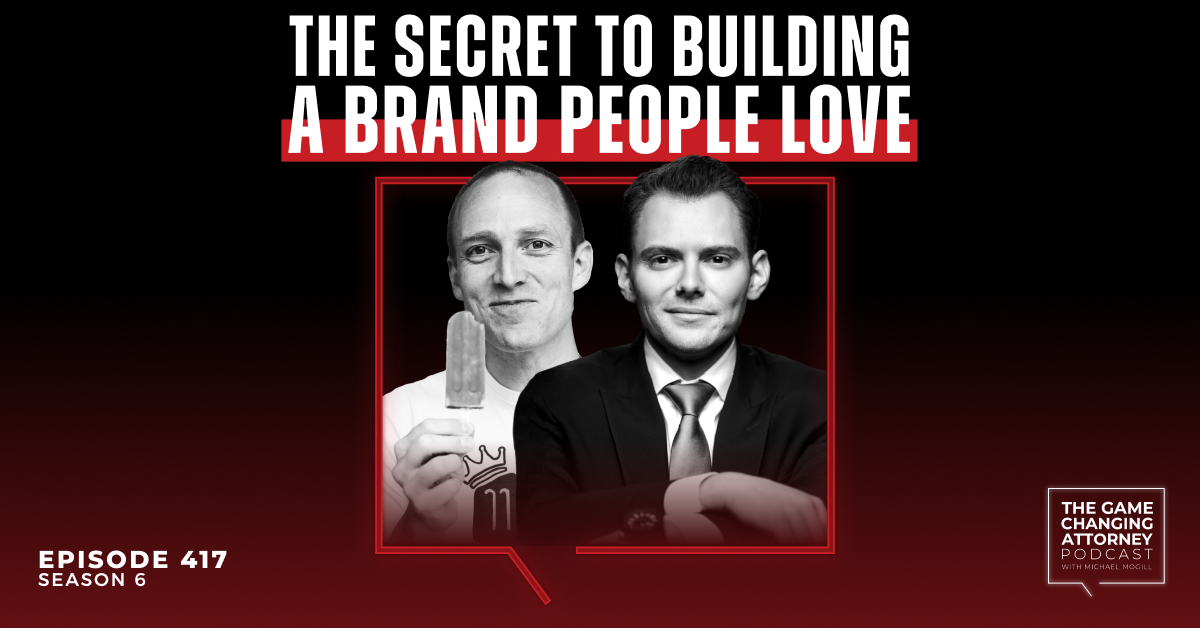
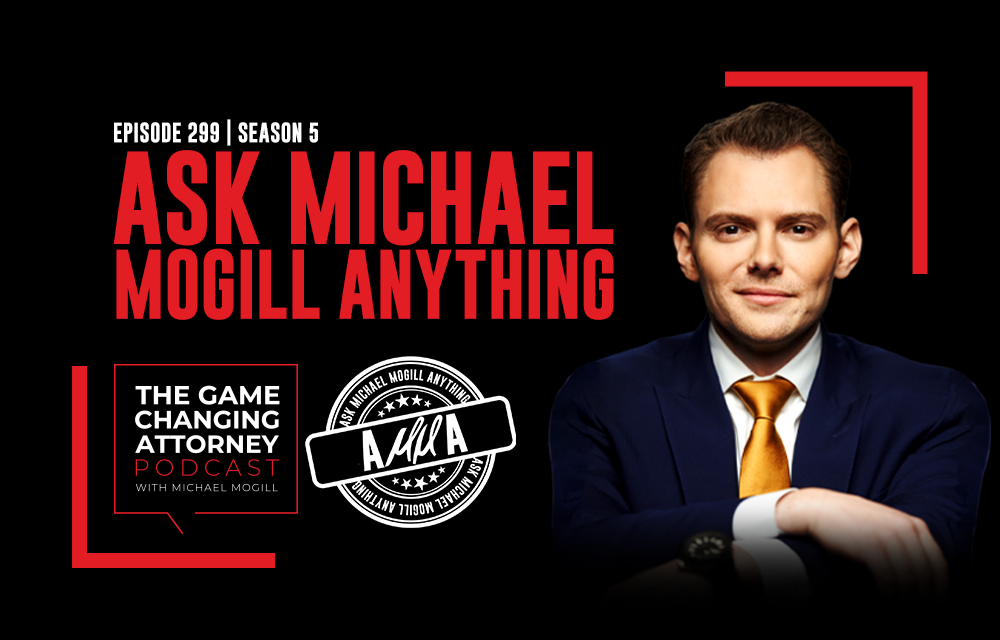
Episode 299 — AMMA — How to Build a Resilient, Self-Sufficient Team That Thrives Without You
Are you setting your team up for failure without even knowing it?
If you’re a leader, the biggest threat to your success might not be external forces. It could be the way you’re managing your team. Without realizing it, you could be creating a culture of order-takers instead of critical thinkers — and that’s a recipe for disaster in today’s competitive market.
In this episode of The Game Changing Attorney Podcast, Michael Mogill dives deep into the pitfalls of spoon-feeding your team and the steps you can take to foster leadership, innovation, and resilience across your organization.
Don’t miss this candid episode all about:
- Why giving all the answers weakens your team’s ability to think critically
- How to push your team to take ownership and think bigger
- The deadly habit of quitting and how to break the cycle of mediocrity

Listen & Subscribe
Show Notes:
Make them think. “One common challenge in many firms is the tendency to provide all the answers for team members. I’ve been guilty of this myself. When you give all the answers, you deny others the chance to think critically. But what happens when you stop spoon-feeding the answers? They have no choice but to burn some mental calories and engage in critical thinking. Recently, we encountered this while working on a few service offerings at Crisp. I have my ideas, but instead of dictating everything, I wanted to see what our leadership and team members could develop. However, the challenge is that when you initiate brainstorming sessions without any structure, it can lead to chaos.”
Stop hand-holding. “When presenting a project to one of our team leads, I focused on creating a structured approach for idea generation and strategy development. I asked them to come up with ideas and research for evolving a particular offering, while providing general guidelines. It had to align with our values, offer value to our clients, and make logistical sense. I outlined the criteria to ensure the idea would be viable — not necessarily good or bad, but something worth considering. Then, I encouraged them to conduct research while providing the necessary resources and support.”
No more order-takers. “When working on projects with different team leads, I aim to encourage ownership of the initiative, allowing them to be the architects of their ideas. My role is to offer resources and support, helping them assess the viability of their ideas and guiding them through the process I used to handle myself. It’s more than just saying, ‘Let’s do this,’ and handing over a fully mapped-out plan. By doing that, you’re not creating critical thinkers, just order-takers. You need to show them how to take an idea from inception to execution.”
Grow or die. “It’s easy to get comfortable, and the moment you feel that way, it’s a sign you need to reassess. Complacency is a trap. Your business is either growing or dying. If you’re not growing, your business becomes less competitive and things get more difficult. It’s about managing growth and staying on top of it. As David Goggins said on the podcast, it’s easy to hustle when you have nothing, but staying driven when you’ve achieved success is a whole new challenge.”
Vision beyond yourself. “Once you’ve achieved personal success, the real power comes when your vision shifts from yourself to others. This is when you become truly dangerous in the best way possible. It’s a profound shift when your goals evolve from selfish to selfless. When your driving force is the success of others — your clients, your team, your community — your mission becomes much bigger. That’s a powerful motivator. Helping others succeed gives you a deeper sense of purpose and fulfillment.”
Climb Everest or quit. “By continuously setting bigger goals, you ensure you never grow complacent. There’s always another challenge, another mountain to climb. When you achieve a goal, don’t stop. It’s like climbing a hill, then moving on to a bigger mountain, and eventually Everest. Once you conquer Everest, you start thinking about going to the moon, then Mars. There’s always another frontier to explore. The point is, you need to keep growing and making a positive impact. After all, you have to spend your time doing something meaningful.”
Action beats theory. “You can’t learn to ice skate by reading a book. The same goes for building resilience. You learn resilience through practical experience and perseverance. I remember when I was a kid, I read a book on ice skating because I was playing hockey. But reading wasn’t enough. I had to get on the ice and practice. Similarly, you won’t build resilience by thinking about it or reading about it. You build it by facing difficult situations head-on and pushing through them.”
Quitting becomes contagious. “Quitting can become a habit, and I’m terrified of it. Once you quit one thing, it becomes easier to quit everything. There are times when quitting is necessary, but those instances are rare. If your immediate impulse is to give up when things get tough, you’re setting a precedent for future challenges. What will you do when you encounter something else difficult? Quitting becomes the default reaction.”
Where resilience is born. “Momentum is great when things are fun and exciting, but what happens when it gets tough? That’s when your real commitment is tested. When the work gets boring or hard, that’s when many people tap out. If you want to build resilience, you need to show up every day, regardless of how you feel. Motivation is fleeting. It comes and goes. But if you can execute consistently, no matter your mood, you’ll build resilience and become stronger over time.”
Connect with Michael
- Text directly at 404-531-7691

